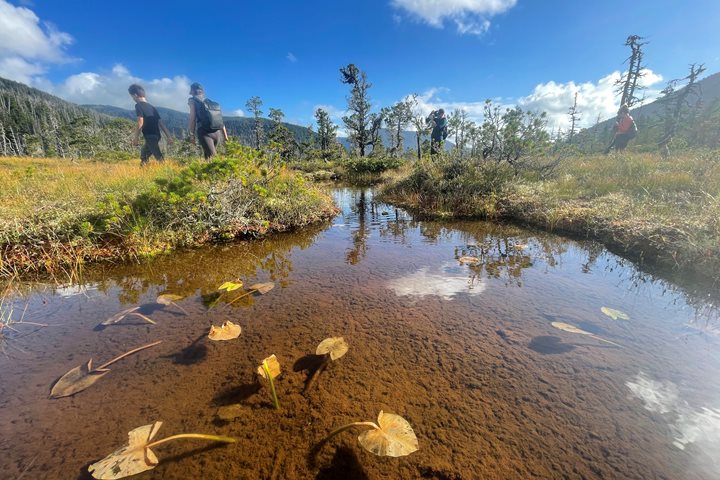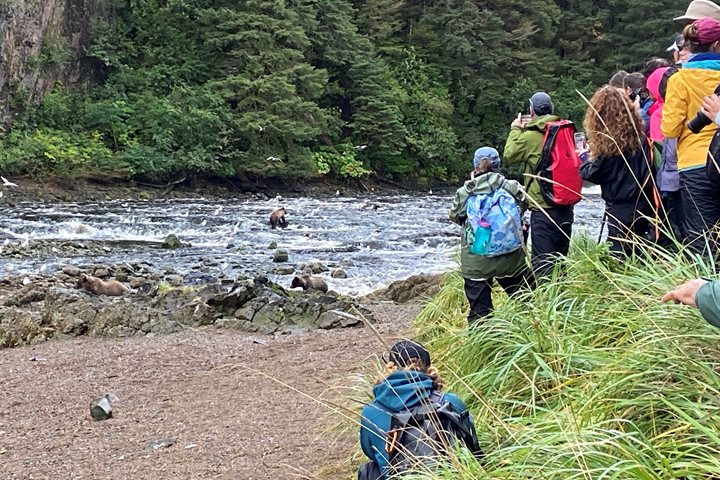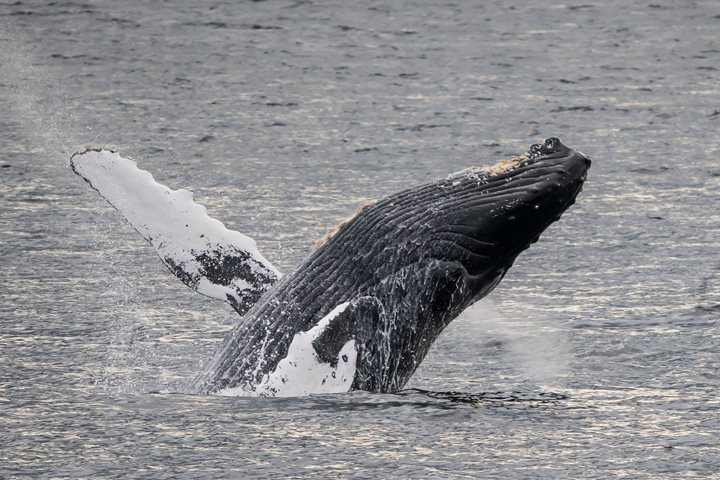This morning the National Geographic Sea Lion awoke on the northwest end of Chichagof Island and the northern entrance of the Inside Passage. A foggy morning rewarded us with an incredible landscape of an emerald forest draped in many layers of mist. Humpbacks surrounded the ship and we could hear heavy breathing all around as this large moustache/baleen whale pursued the food of these cold rich waters. After breakfast we landed at the end of a fjord called Port Althrop and explored the rich edge of the temperate rainforest. Signs of Ursus arctos were everywhere as we followed habitual bear paths into the thick fringes and found a bear scratching tree that looked like it had recently been visited with fresh claw marks and sap oozing from the trunk. A good wind event had toppled some trees and made for some exceptionally large disturbances on the forest floor with huge root wads peeled back from the earth. The resulting light gaps grew thick with understory flora as blueberries, devils club, ferns, twisted stalk and the next generation of spruce thrived in well lit conditions. Down along the beach in the intertidal, a Humboldt Squid was found washed up on the shore. With a normal range from San Diego to Northern Chile, their range is expanding from Southern Alaska to Tierra del Fuego. With changes in climate, current, and oxygen-levels, the squids' expansion seems to be equated to the eastern Pacific's growing dead zones (a subject worthy of a google search when you get home).
After lunch we went on the world’s best Zodiac cruise in and amongst the Inian Islands. With a changing tide in the northern portal of the Inside Passage the great pacific was flush with food, feeding the appetites of the world’s largest sea lion. Approaching closely to our boats we got up close and personal with this curious “Steller” species. Further down the pass sea otters procreated in a tough love sort of fashion with nose nibbles after both their heads had been submerged for what seemed like quite a long while. The sun soaked afternoon could not have been more beautiful as parts of the Fairweather Range slowly revealed some of the mountains masked earlier in fog and cloud.
After dinner a salmon shark swam in small circles right off the bow of the ship. Averaging 6.5-8 feet this apex predator feeds on salmon, squid, sablefish, herring, pollock, and a variety of other fish. A highly migratory species, with segregation by size and sex, the larger sharks range more northerly than the young. Migration is ultimately dependent on the concentration of the available prey species and quite often follows schools of Pacific salmon. An incredible sighting after but another incredible day here in Southeast Alaska!









